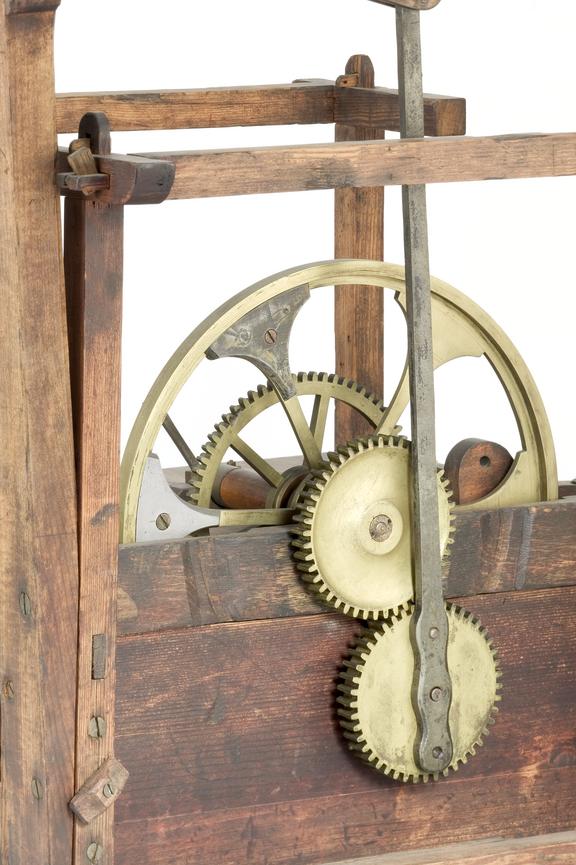Replaced part, being balance weight
Replaced part, being balance weight
- Object Number:
- 1876-1258/1
- type:
- weights




Model of sun and planet gearing, made by James Watt ,1782-1784, demonstrating the action designed to produce a rotative motion. Preserved by James Watt & Co.
Engineer James Watt was working on the application of the crank and connecting-rod to an engine beam as a means for converting its reciprocating into circular motion when he was forestalled by the patent taken out in 1780 by James Pickard, who, it has been stated, obtained his information through one of Watt's workmen; Watt, instead of contesting the patent, decided to adopt other mechanism. This and the four succeeding models show some of these mechanisms which he patented in 1781; of these, however, only the sun and planet gear came into use. It is an epicyclic gear consisting of a sun wheel keyed on the end of the fly-wheel shaft and a planet wheel bolted to the connecting-rod end and held in gear with the sun wheel by a link loose on their centres, as in the model, or by a pin in the centre of the planet wheel moving in an annular slot. When both wheels are of the same diameter the fly-wheel makes twice the number of revolutions that it would if actuated by a crank and connecting-rod, the extra revolution being due to the fact that the planet wheel, although going round in a circle, does not revolve on its own axis. In some of Watt's engines the diameter of the planet wheel was less than that of the sun wheel, and in this way shaft speeds were obtained only about 50 per cent. greater than would have been the case with a simple crank.
Replaced part, being balance weight
Model of sun and planet gearing, made by James Watt ,1782-1784, demonstrating the action designed to produce a rotative motion. Preserved by James Watt & Co.



